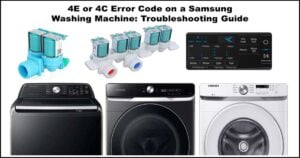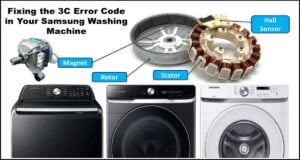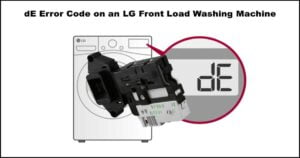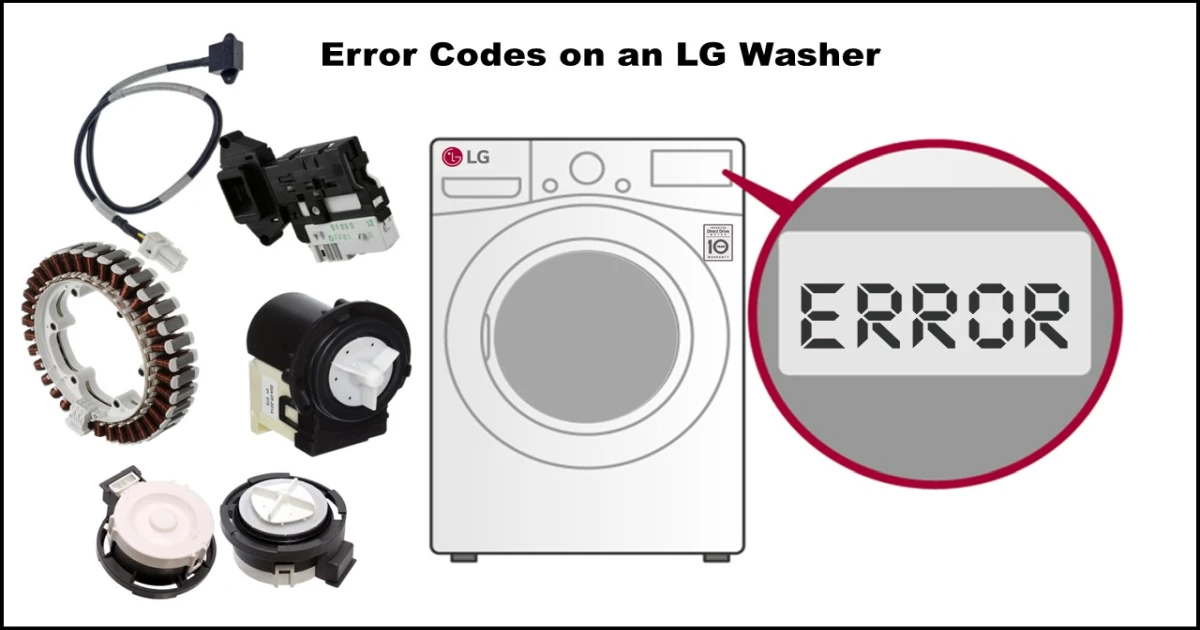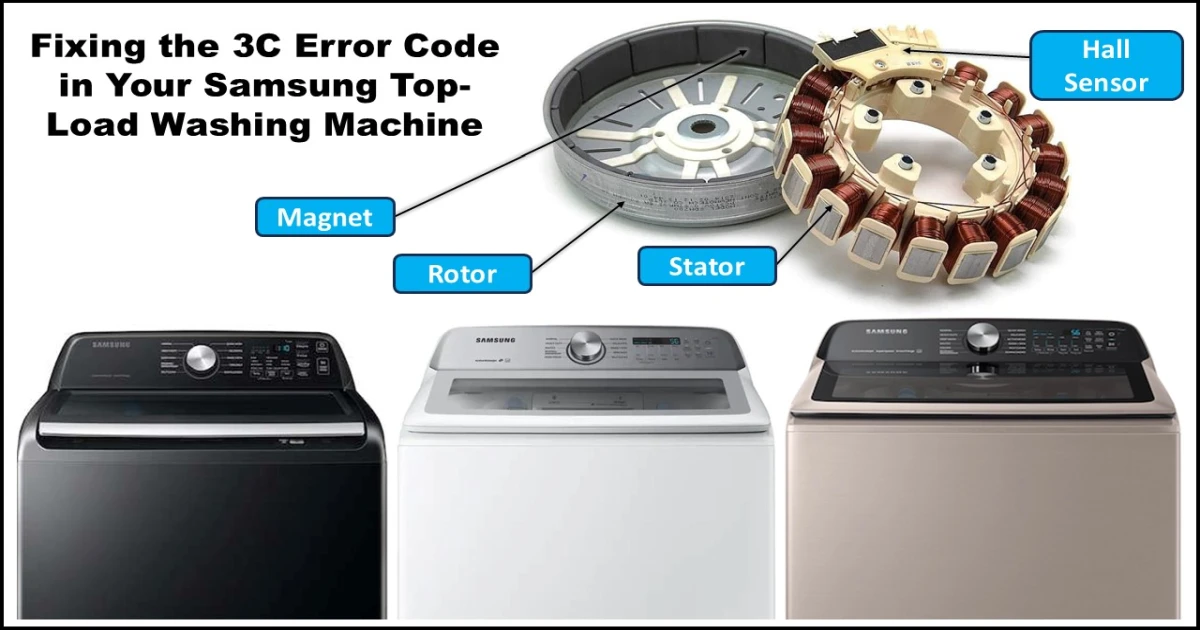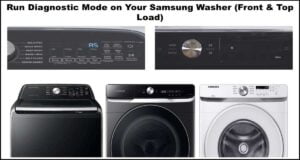Troubleshooting Your MIDEA Top Load Washer: Error Codes Explained
Is your Midea top-load washing machine displaying an error code and refusing to finish the cycle? Don’t panic! These codes are designed to help you identify potential problems.
This guide will help you understand common Midea top load washer error codes and suggest troubleshooting steps you can take.
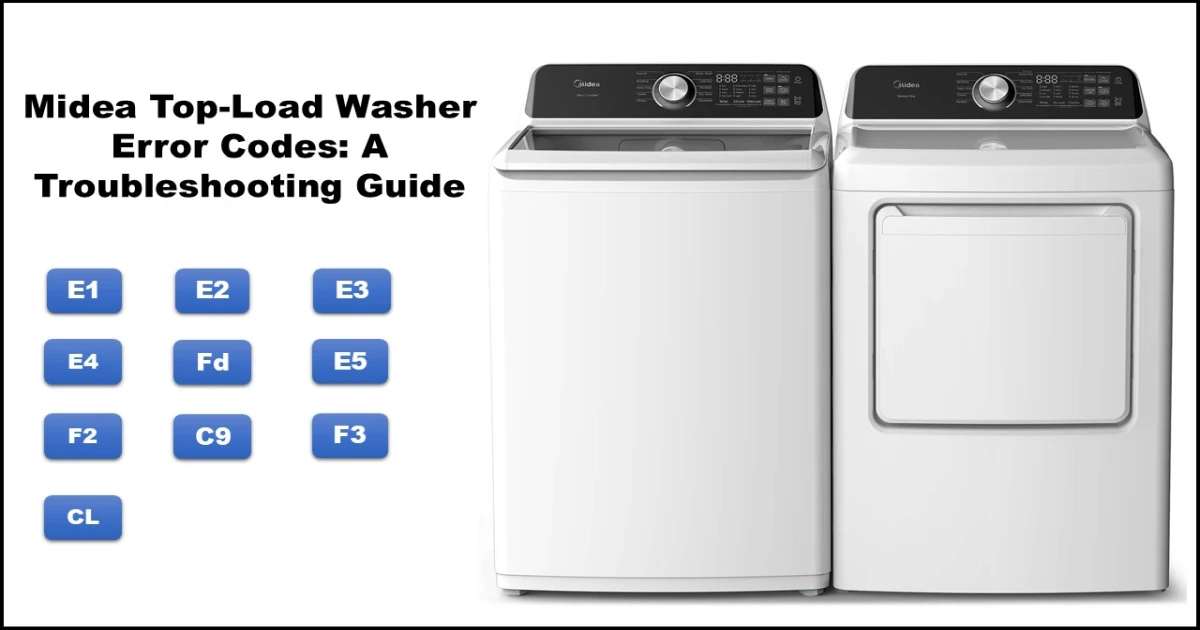
Safety First! Before investigating any error code or attempting troubleshooting, always unplug your washing machine from the power outlet to prevent electrical shock.
MIDEA Top Load Washer Error Codes Summary
For a quick reference, here’s what the common error codes typically indicate:
| Error Code | Primary Meaning |
|---|---|
| E1 | Water Inlet or Filling Problem |
| E2 | Draining Problem |
| E3 | Lid Open Malfunction |
| Fd | Lid Lock Malfunction |
| E4 | Unbalanced Load |
| E5 | Washer Not Level |
| F2 | Control Board (PCB) Error |
| C9 | Memory Error |
| F3 | Water Level Sensor Malfunction |
| CL | Child Lock Activated (Notification) |
Detailed Troubleshooting for Midea top load washer Error Codes
If your washer displays one of these codes, follow the steps below. Remember to keep the washer unplugged while performing checks.
E1: Inlet Valve Error
- Meaning: Problem filling the washer with water.
- Solutions:
- Ensure both hot and cold water faucets connected to the washer are fully turned on.
- Check if your home’s water pressure is adequate (not unusually low).
- Inspect and clean the filter screens inside the water inlet valve connections (where the hoses attach to the washer). Debris can block water flow.
- Check the wire harness connections between the main control board (PCB) and the water inlet valve(s) for secure contact.
- Check the resistance of the water inlet valve using a multimeter. Compare readings to the expected values (approx. 1650Ω for 120V models, 3600Ω for 220V models). Replace the valve if faulty.
- Check the water level sensor and its hose connection. Replace if damaged or malfunctioning.
- If all else fails, the main PCB might be faulty.
E2: Drain Pump Error
- Meaning: Problem draining water from the washer.
- Potential Causes: Clogged drain system, faulty drain pump, faulty water level sensor, or retractor issue.
- Solutions:
- Check the drain hose for kinks or blockages. Ensure it’s not inserted too far into the standpipe.
- Clean the drain pump filter (if accessible on your model) – coins, lint, or small objects can obstruct the pump.
- Check the retractor mechanism (if applicable – this part engages the drain and clutch). Ensure it’s operating correctly.
- Inspect the air chamber (part of the water level sensor system) for blockages.
- Check the resistance of the drain pump (if applicable, primarily for up-drain systems) using a multimeter (approx. 16Ω for 120V, 140Ω for 220V). Replace if needed.
- Check the water level sensor and its connections/hose.
- Check the main PCB.
E3 / Fd: Lid Open / Lid Lock Error
- Meaning: The washer detects the lid is open when it should be closed/locked (E3), or the lid lock mechanism has failed (Fd).
- Solutions:
- Ensure the lid is fully closed.
- Check for obstructions preventing the lid from closing or the lock from engaging.
- Inspect the lid switch assembly for physical damage.
- Test the lid switch/lock assembly components for electrical continuity using a multimeter. The lid lock assembly typically has a resistance of around 65 Ω. Replace if faulty.
- Check the main PCB connections and function.
E4 / E5: Spin Unbalance / Washer Not Level Error
- Meaning: The load is unevenly distributed (E4), or the washer itself is not level (E5), causing excessive shaking during spin.
- Solutions:
- Pause the cycle, open the lid, and redistribute the laundry evenly in the drum. Avoid washing single heavy items.
- Check if the washing machine is level. Use a spirit level on the top edges. Adjust the leveling legs underneath the washer until it sits firmly and evenly on the floor.
- If the washer is level but still shakes violently, the suspension rods (which support the tub) may be worn or damaged. Inspect them and replace if necessary.
- Check the balance ring (usually at the top of the inner tub) for damage or leaks (if liquid-filled).
- Check the safety/impact switch (detects excessive shaking) for proper operation and continuity using a multimeter.
F2 / C9: EEPROM / PCB Failure Error
- Meaning: Problem with the washer’s electronic memory or the main control board itself.
- Solutions:
- This usually indicates a failure of the main control board (PCB). Replacement is typically required.
F3: Water Level Sensor Error
- Meaning: The washer is detecting an issue with the water level sensor (pressure switch).
- Solutions:
- Check the wiring connections between the main PCB and the water level sensor.
- Inspect the thin plastic tube (sensor hose) running from the tub/air chamber to the sensor. Ensure it’s securely connected at both ends and free from kinks, holes, or blockages.
- Clean the air chamber (where the hose connects to the tub area), as detergent residue can sometimes cause blockages.
- Check the water level sensor itself using a multimeter for correct resistance (~20-40 Ω between pins 1 & 3) and capacitance (~40-50 nF between pins 1&2 and 2&3). Replace if faulty.
- Check the main PCB.
CL: Child Lock Notification
- Meaning: This isn’t an error but an indicator that the Child Lock feature is active, preventing accidental button presses.
- Solution:
- To deactivate Child Lock: Press and hold the “Soil Level” and “Temp” buttons simultaneously for about 3 seconds. The “CL” notification should disappear from the display.
When to Call a Professional
While understanding error codes can help you perform basic troubleshooting, some repairs involve complex diagnostics or component replacement. If you encounter:
- Persistent errors after trying the simple fixes.
- Problems requiring component testing with a multimeter or replacement (PCB, sensors, motors, pumps, suspension rods).
- Any task you are uncomfortable or unsure about performing safely.
It’s best to contact Midea customer support or a qualified appliance repair technician for assistance.
Disclaimer: Error code meanings and troubleshooting steps can vary slightly depending on your specific MIDEA top-load washer model. Always consult your owner’s manual for model-specific information if available.
